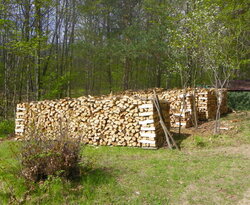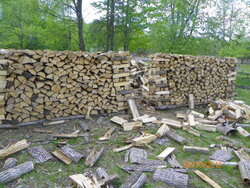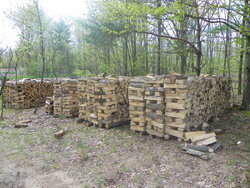I know in a perfect world you'd have a dry, sunny wind blowing nonstop through your stacks every day, BUT.....If you had to choose one or the other what would it be?
The reason I ask is my back yard gets FULL sun all day and I have a S/W exposure that stays HOT all summer, but not a lot of wins due to fencing.
Conversely I have other areas of my property that would get more WIND, but not full sun.
In my back yard where I get direct sun all day I am even thinking of constructing a temporary wood shed with clear plastic corrugated panels to cook it!
Just trying to decide where to stack for the fastest drying time. Of course I will eventually stack EVERYWHERE
The reason I ask is my back yard gets FULL sun all day and I have a S/W exposure that stays HOT all summer, but not a lot of wins due to fencing.
Conversely I have other areas of my property that would get more WIND, but not full sun.
In my back yard where I get direct sun all day I am even thinking of constructing a temporary wood shed with clear plastic corrugated panels to cook it!
Just trying to decide where to stack for the fastest drying time. Of course I will eventually stack EVERYWHERE






